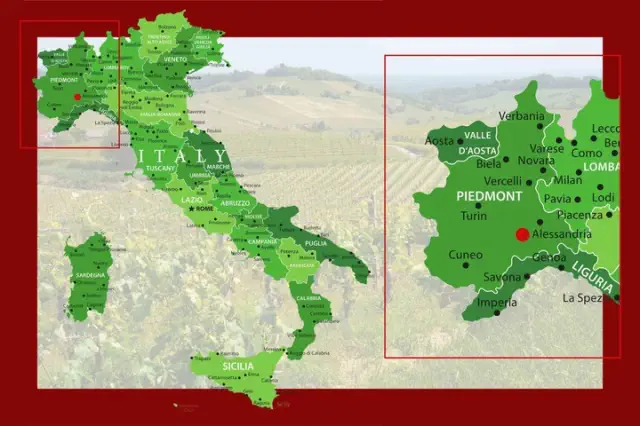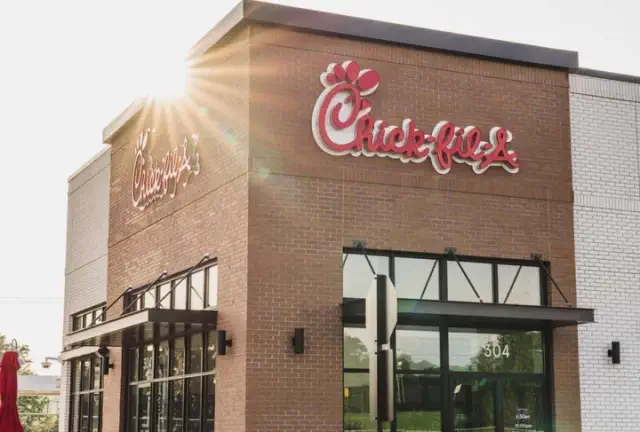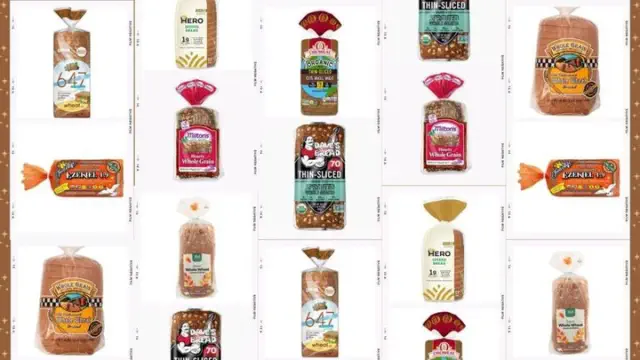As Barbera is the most widely planted red grape in Piemonte, there is a strong identity with this varietal. Distinctive for its high acidity and relatively low level of tannins for a red varietal, it is found in dining rooms across the region, from the humblest trattorie to the most elegantly appointed ristoranti. Given its flavor and sensory profiles, Barbera is an ideal selection at lunch, especially as its lively acidity cuts through the fatty qualities of all types of salumi. Likewise, its modest tannins give Barbera an immediate drinkability not often found with most other reds, local or international.
Barbera possesses a commendable character, yet when juxtaposed with local wines like Barolo and Barbaresco, which are exclusively crafted from Nebbiolo, it often finds itself in a secondary position. This is largely due to the exceptional quality of Piemonte’s most renowned red wines; the best Barolo and Barbaresco can mature beautifully over many years, while most Barbera selections are generally designed for more immediate enjoyment.
Introducing Nizza, a wine crafted exclusively from Barbera, which has transformed the perception of this grape variety. Despite its relatively short history, Nizza has emerged as a remarkable red wine that showcases exceptional varietal authenticity, impressive complexity, and, perhaps most crucially, substantial aging potential.
Nizza is a wine produced in the Monferrato region of the Asti province, encompassing 18 municipalities, with Nizza Monferrato being the one that gives the wine its name. It was officially recognized as a subzone of Barbera d'Asti in the 2000 vintage, receiving DOC status. In 2008, it achieved DOCG status, and by 2014, its name was officially simplified to Nizza DOCG. This change allowed the wine to be recognized solely by its geographic designation, similar to Barolo and Barbaresco, which also do not include the grape variety on their labels. This was a significant milestone for Nizza, as it emphasized the wine's connection to its terroir, a crucial aspect in defining its quality and character.
The vineyards in the Nizza production area are situated on slopes, generally ranging from 150 to 350 meters (490 to 1150 feet) above sea level. The region primarily features sandy soils, but loamy and clayey soils can also be found throughout the area, alongside marine deposits. These soil types are particularly favorable for Barbera, enhancing the vibrant cherry and plum flavors along with the spicy hints of oregano and tobacco, while also ensuring the right balance for aging potential. In certain locations, the red soils, composed of calcareous clay and rich in iron oxides, contribute a striking red hue as well as substantial weight and structure to the wines produced.
Cellar management varies among the producers, ranging from large casks known as grandi botti (15-to 30-hectoliters in volume) to mid-size oak containers known as tonneaux (typically 500 liters) and small oak barrels of 250 liters known as barriques. Early on, there was a belief that barrique-aging was a key to the typicity of Nizza, yet some examples were too oak-laden, hiding the varietal fruit aromas of Barbera. Thankfully, most local producers have made the decision to lessen oak influence, as Stefano Chiarlo, President of the Associazione Produttori del Nizza, explains. “Generally speaking, Nizza producers are reducing the use of small and new wood; they are using more second-passage barrels or larger wood, such as 25 or 30 hectoliters.”
At present, the association boasts over 90 members, and as Chiarlo highlights, a key aspect of this collective is the pre-tasting process they conduct prior to the release of their wines. “We all sample the wines before they are bottled. Each member shares their feedback, particularly if there are any expressions that lack clarity.” Chiarlo emphasizes that this approach was established by his late father Michele, “to serve as a guide for enhancing quality and to shape the identity of Nizza wine. It’s crucial for the wines to have a distinct character.”
What defines a typical Nizza wine? According to Susanna Galandrino from La Gironda in Nizza Monferrato, “Nizza DOCG is unique for its depth, complexity, and potential for aging, while still offering remarkable elegance and drinkability.” Luca D’Attoma, the consulting winemaker for Amistà winery in Nizza Monferrato, adds that “a true Nizza should exhibit a powerful bouquet of wild berries and raspberries, complemented by spicy undertones … It is characterized by finesse, elegance, and a harmonious balance, with tannins that are never overpowering.” Lastly, Stefano Gagliardo, owner of Tenuta Garetto in Agliano Terme, emphasizes, “It’s crucial for Nizza to maintain a high average quality that continues to improve … There’s always a savory aspect, a touch of salinity, and a mineral, briny hint present in all our Garetto wines; I believe this reflects a distinctive site character within the appellation.”
Every wine association in Italy seeks greater awareness of their land and products; to that end, the Nizza Associazione has proposed a structure known as UGA (Unità Geografiche Aggiuntive – Additional Geographical Units) that identifies place names – often single vineyards - in the Nizza production zone. Based on a similar system currently in use in Chianti Classico, the proposal is for 145 UGA names, and while Chiarlo doubts this many units will be approved by the minister of agriculture (he states that many Nizza producers prefer between 50 and 55 UGA names), he understands the importance of this proposal, “a more precise expression of the different terroirs,” in his words.
Gradually, Nizza has evolved into a significant success both critically and commercially, capturing the interest of wine enthusiasts across various global markets. According to Chiarlo, the annual production reaches approximately two million bottles, and Nizza is recognized as an appellation that experiences an annual growth rate of around ten to fifteen percent.
"In 2016, we had around 35 wineries and roughly 40 labels of Nizza. Fast forward to today, and we now boast a total of 100 wineries, with approximately 170-180 labels, including Nizza, Nizza Riserva, and single vineyards. This illustrates the remarkable growth of the Nizza appellation."
Galandrino emphasizes, “It's essential for the world to understand that Nizza DOCG is more than just another Barbera; it represents the finest expression of a remarkable and singular terroir. We must continue our collaborative efforts, as we have been doing, gradually and with the support of journalists, wine authors, patrons, and importers. Our goal is to encourage people to select a bottle of Nizza purely for its identity, and to leave them so impressed by its quality that they feel compelled to visit us and explore our region!”
Observations on the latest Nizza releases (please note that Nizza requires a minimum aging period of 18 months, with at least six months spent in wooden barrels, whereas Nizza riserva necessitates a minimum aging of 30 months, including 12 months in wood):
Cossetti Nizza “Criveletto” 2021 - Aromas of black plum, myrtle and a hint of chocolate. Subdued wood notes, excellent complexity, very good persistence. Enjoy over the next eight to twelve years. (94)
Frasca Nizza “La Guaragna” 2021 - A blend of fruit from several communes, this has complex aromas (plum, myrtle, juniper) and little oak influence. Very elegant and enjoyable! Enjoy over the next five to eight years. (93)
Amistà Nizza 2021 - Mocha, black cherry, lavender and notes of paprika on the nose. Medium-full and quite elegant, this has moderate tannins and a subtle note of minerality in the finish. Very appealing now, enjoy over the next five to eight years. (92)
Coppo Nizza “Pomorosso” 2021 - From one of the best-known producers of Nizza, a wine of excellent complexity combining black fruit with notable spice and herbal notes. The tannins are very supple. Best enjoyed over the next five to seven years. (93)
La Gironda Nizza “Le Nicchie” 2020 - Red cherry, strawberry and tar aromas. Medium-bodied, this is more of a low-key style of Nizza that is quite elegant and is very appealing now; enjoy over the next four to six years. (91)
Prunotto Nizza Riserva Costamiòle 2021 - Deep purple with very ripe fruit and ample oak, this is a more modern style of Nizza that has notable intensity along with a lengthy finish. Consume over the next 5-8 years. (91)
Cascina Garantina Nizza Riserva “Gianola 900” 2017 - A blend of three different vineyards, with the oldest from 1947. Black, plum, cassis and baking chocolate flavors. Excellent ripeness, beautiful harmony. Peak in six to twelve years. (93)
Olim Bauda Nizza Riserva 2017 - This offers abundant black fruit flavors along with exotic notes of Indian spice. Medium-full, this has restrained wood notes along with great mouthfeel, as the wine hits every corner of the mouth. Very well made, with beautiful harmony. Enjoy over the next five to ten years. (94)
Marenco Nizza Riserva “Zana” 2020 - Red currant, red plum, burnt cherry and oregano aromas. Medium-full, this displays impressive freshness and very good persistence. Elegantly styled, consume over the next four to seven years. (92)
Bava Nizza “Pianoalto” 2019 - Expressive aromas of red fruit and red flowers (poppy, chrysanthemum). Delicate wood notes, lovely complexity and impressive harmony and varietal character. Enjoy over the next five to six years. (90)
Tenuta Garetto Nizza Riserva “Favà” 2021 - Sourced from a beautiful hillside vineyard in Agliano Terme, this has become something of a first-growth for Nizza. Aromas of black plum, licorice, soy and a hint of black pepper, this displays excellent ripeness and typicality, and has lovely harmony. The 2021 Favà is not the most powerful example of Nizza, but it is among the most complex and complete. Enjoy over the next six to ten years. (93)
Michele Chiarlo Nizza Riserva La Court 2021 - One of the most acclaimed of all Nizza, the La Court 2021 is imbued with layers of ripe, but never overripe black fruit, very good acidity and soft tannins. Beautifully balanced, but almost hedonistic in its pleasures; enjoy over the next 8-10 years, perhaps longer. (95)










